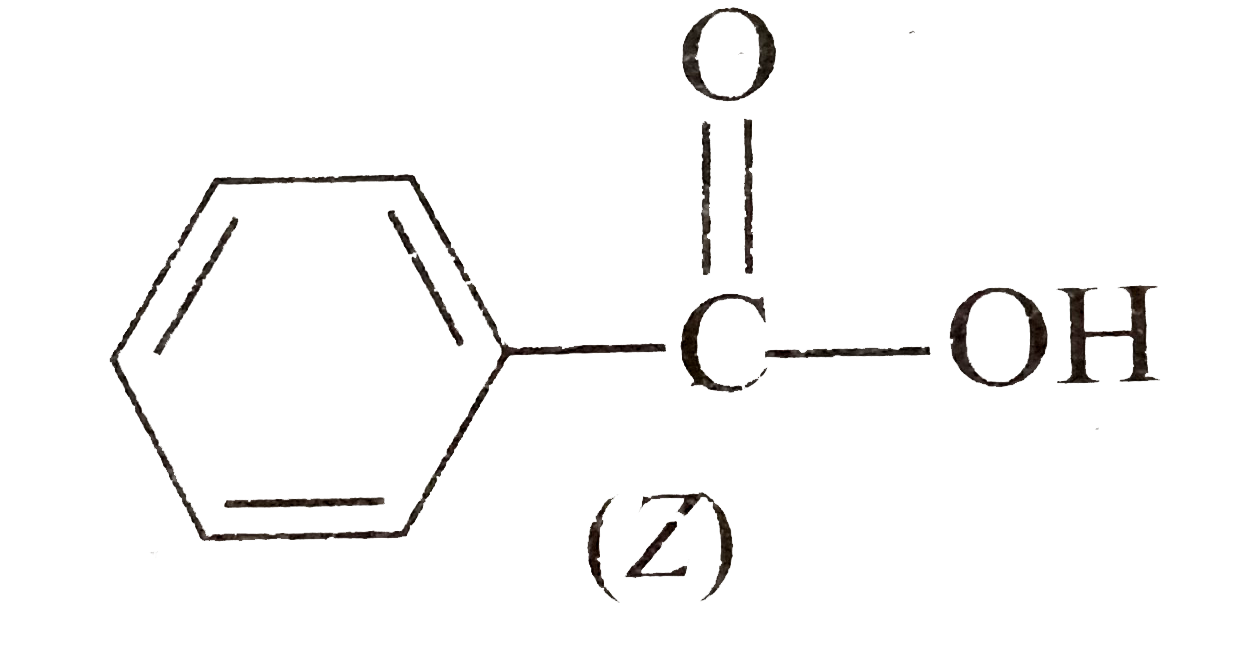Examine the following resonating structures of formic acid and arrange them in decreasing order of stability :
H−O∣∣C−⋅⋅O⋅⋅H↔H−ƟO∣C=⊕O−H−↔H−ƟO∣C⊕−OH↔H−O⊕∣CƟ−OH
II>I>III>IV
I>II>III>IV
III>II>IV>I
IV>III>I>II
The correct Answer is:B
To determine the stability of the resonating structures of formic acid, we will analyze each structure based on the following criteria:
1. Charge Neutrality: Neutral molecules are generally more stable than charged ones.
2. Octet Rule: Structures where all atoms have a complete octet are more stable.
3. Electronegativity: Negative charges are more stable on more electronegative atoms.
Step 1: Identify the Structures
We have four resonating structures to analyze. Let's denote them as:
- Structure 1: Neutral structure (HCOOH)
- Structure 2: Positive charge on carbon and negative charge on oxygen
- Structure 3: Negative charge on oxygen and positive charge on carbon
- Structure 4: Negative charge on carbon and positive charge on oxygen
Step 2: Analyze Structure 1
- Structure 1 is neutral (HCOOH).
- It has a complete octet for all atoms (C, O, H).
- Stability: Most stable due to neutrality and complete octet.
Step 3: Analyze Structure 2
- Structure 2 has a positive charge on carbon and a negative charge on oxygen.
- Both oxygen and carbon have complete octets.
- Stability: More stable than charged structures but less stable than Structure 1.
Step 4: Analyze Structure 3
- Structure 3 has a negative charge on oxygen and a positive charge on carbon.
- The octet is complete for both atoms.
- Since the negative charge is on the more electronegative oxygen atom, this structure is relatively stable.
- Stability: Less stable than Structure 1 and Structure 2.
Step 5: Analyze Structure 4
- Structure 4 has a negative charge on carbon and a positive charge on oxygen.
- The octet is not complete for carbon.
- The negative charge on carbon (less electronegative) makes this structure the least stable.
- Stability: Least stable due to incomplete octet and unfavorable charge distribution.
Final Order of Stability
Based on the analysis:
1. Structure 1 (Neutral - HCOOH)
2. Structure 2 (Complete octet, charges on C and O)
3. Structure 3 (Complete octet, negative charge on O)
4. Structure 4 (Incomplete octet, negative charge on C)
Thus, the order of stability from most stable to least stable is:
1 > 2 > 3 > 4
2. Octet Rule: Structures where all atoms have a complete octet are more stable.
3. Electronegativity: Negative charges are more stable on more electronegative atoms.
We have four resonating structures to analyze. Let's denote them as:
- Structure 1: Neutral structure (HCOOH)
- Structure 2: Positive charge on carbon and negative charge on oxygen
- Structure 3: Negative charge on oxygen and positive charge on carbon
- Structure 4: Negative charge on carbon and positive charge on oxygen
- Structure 1 is neutral (HCOOH).
- It has a complete octet for all atoms (C, O, H).
- Stability: Most stable due to neutrality and complete octet.
- Structure 2 has a positive charge on carbon and a negative charge on oxygen.
- Both oxygen and carbon have complete octets.
- Stability: More stable than charged structures but less stable than Structure 1.
- Structure 3 has a negative charge on oxygen and a positive charge on carbon.
- The octet is complete for both atoms.
- Since the negative charge is on the more electronegative oxygen atom, this structure is relatively stable.
- Stability: Less stable than Structure 1 and Structure 2.
- Structure 4 has a negative charge on carbon and a positive charge on oxygen.
- The octet is not complete for carbon.
- The negative charge on carbon (less electronegative) makes this structure the least stable.
- Stability: Least stable due to incomplete octet and unfavorable charge distribution.
Based on the analysis:
1. Structure 1 (Neutral - HCOOH)
2. Structure 2 (Complete octet, charges on C and O)
3. Structure 3 (Complete octet, negative charge on O)
4. Structure 4 (Incomplete octet, negative charge on C)
1 > 2 > 3 > 4
Topper's Solved these Questions
- GENERAL ORGANIC CHEMISTRYBOOK - HIMANSHU PANDEYCHAPTER - GENERAL ORGANIC CHEMISTRYEXERCISE - Level 2 (Q.26 To Q.50)
25 Videos
- GENERAL ORGANIC CHEMISTRYBOOK - HIMANSHU PANDEYCHAPTER - GENERAL ORGANIC CHEMISTRYEXERCISE - Level 2 (Q.51 To Q.75)
25 Videos
- GENERAL ORGANIC CHEMISTRYBOOK - HIMANSHU PANDEYCHAPTER - GENERAL ORGANIC CHEMISTRYEXERCISE - Level 1 (Q.26 To Q.49)
24 Videos
- CHEMISTRY IN DAILY LIFEBOOK - HIMANSHU PANDEYCHAPTER - CHEMISTRY IN DAILY LIFEEXERCISE - Integer Answer Type Problems
7 Videos
- HALIDESBOOK - HIMANSHU PANDEYCHAPTER - HALIDESEXERCISE - Subjective Type Problems
10 Videos
Similar Questions
Examine the following resonating structures of formic acid and arrange them in decreasing order of stability:-
H−O∣∣C−..O..−H↔H−O∘∣∣C=O⊕−H↔
H−C∣O⊕⊕−..O..−H↔H−..O..−H↔H−C∣O⊕⊕=O−H
View SolutionIdentify and name the functional groups present in the following compounds.
ii. H−H∣C∣H−H∣C∣H−O∣∣C−O−H∣C∣H−H
View Solution
Knowledge Check
Arrange the following resonating structures of formic acid in order of decreasing stability:
H−O∣∣C−OH(I)↔H−O−∣∣C−+OH(II)↔HO−∣C+−OH(III)↔H−O−∣C−−O(IV)AII>I>III>IVBI>III>II>IVCIII>II>IV>IDIV>III>I>IIExamine the following resonating structures of formic acid for their individual stability and then asnwer the question given below.
H−O∣∣CI−OH↔H−O−∣CII=+O−H↔H−O−∣C+III−OH↔H−O+∣C−IV−OH
Which of the following arrangements gives the correct order of decreasing stability of the above-mentioned resonance contributors ?AII>I>III>IVBI>II>III>IgIVCIV>III>I>IIDIV>III>I>IIArrange the following anions in decreasing order of stability :
H−O∣∣C−ƟC(P)H−O∣∣C−H
CH3−O∣∣C−ƟC(Q)H−O∣∣C−H
CH3−O∣∣C−ƟCH−(R)O∣∣C−⋅⋅O⋅⋅−CH3AR>Q>PBQ>R>PCP>R>QDP>Q>R
Identify and name the functional groups present in the following compounds.
ii. H−H∣C∣H−H∣C∣H−O∣∣C−O−H∣C∣H−H
View SolutionArrage the following acids in decreasing order of acidity :
H−O∣∣C(X)−OH CH3−O∣∣C(Y)−OH
View SolutionThe correct IUPAC name of the H−O∣∣C−O∣∣C−O∣∣C−OH is
View SolutionH−H∣C∣H−O∣∣C−O−H∣C∣H−H is a/ an _____.
View SolutionO2N−C(P)H2−O∣∣C−OH
Me3⊕N−C(Q)H2−O∣∣C−OH
NC−CH2−(R)O∣∣C−OH
HO−O∣∣C−(S)O∣∣C−OH:
View Solution
